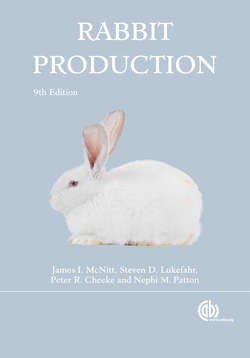Читать книгу Rabbit Production - James I McNitt - Страница 74
На сайте Литреса книга снята с продажи.
Breeding Herd Replacements
ОглавлениеAn extremely important part of herd management is providing adequate replacements for the breeding herd. In commercial rabbitries it is common to replace 100 to 125 percent of the breeding does each year. This does not mean that every doe in the herd is replaced yearly, but it does mean that if you have a 100-doe breeding herd, you will add to this herd 100 to 125 junior does per year. Some cages will have had two or three does during the year, whereas other cages will have the same doe for two years. In fact, if you are not replacing a sizeable portion of the breeding herd annually, you are probably not improving the quality and health of the herd as rapidly as you should. Snuffles, sore hocks, malocclusion, mastitis, poor reproductive performance, and many other reasons will result in breeding animals being removed from the herd. As a general rule, save one replacement doe per month for every 12 does in production, and one replacement buck for every five bucks in service. The continual replacement of old bucks with young bucks is extremely important. Since each buck is bred to many does, his influence on the genetic quality of the herd is much greater than that of an individual doe. Young bucks tend to have greater libido and will work harder than old bucks. The criteria used in selection of young stock are covered in Chapter 15
